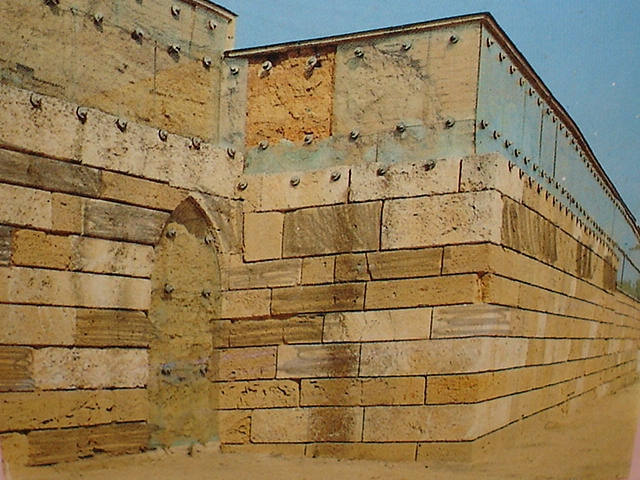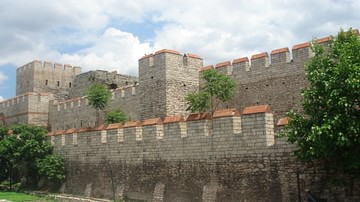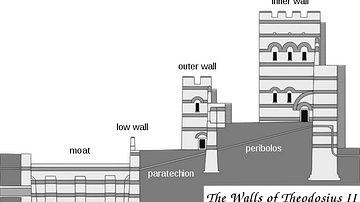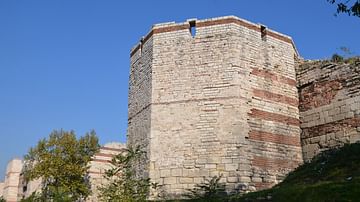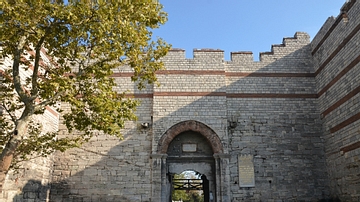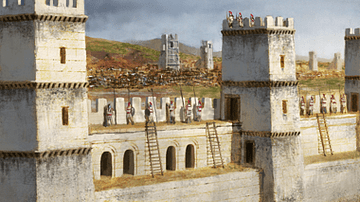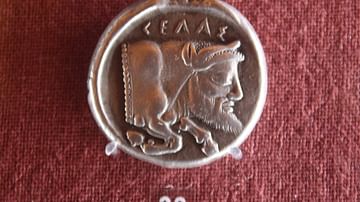Illustration
The walls are the most important monument that has come to us from Hellenistic Gela, preserved in a truly extraordinary way thanks to the sudden cover-up of the area. They are located at the western end of the modern city, in the locality of "Caposoprano", from which they take their name, inside a specifically created archaeological park. They were built towards the end of the 4th century BCE, in double technique: the lower part with isodomic (composed of stones of size, beautifully shaped on all sides, arranged in horizontal rows at a regular and homogenous height) block stones, a very rare material in the area, and mudbricks in the upper one.
The importance of these walls, found in 1948 CE, lies in their degree of conservation, especially the mudbricks, which due to their nature are difficult to preserve. The part that today can be admired reaches in some points the height of 13 metres. In the first section we can see the signs of medieval depletions, when most of the ruins were reused for the construction of the new Federician city of Terranova and the subsequent enlargements of the 16th and 17th centuries. The fortification still has its full military image, with what remains of watchtowers, elevated walkways and stairways to reach them. The erection in mudbricks was presumably imposed by the urgent need to withstand a siege.
Cite This Work
APA Style
Alessandro451, . (2017, December 20). Timoleon Walls, Gela. World History Encyclopedia. Retrieved from https://www.worldhistory.org/image/7797/timoleon-walls-gela/
Chicago Style
Alessandro451, . "Timoleon Walls, Gela." World History Encyclopedia. Last modified December 20, 2017. https://www.worldhistory.org/image/7797/timoleon-walls-gela/.
MLA Style
Alessandro451, . "Timoleon Walls, Gela." World History Encyclopedia. World History Encyclopedia, 20 Dec 2017. Web. 22 Apr 2024.
